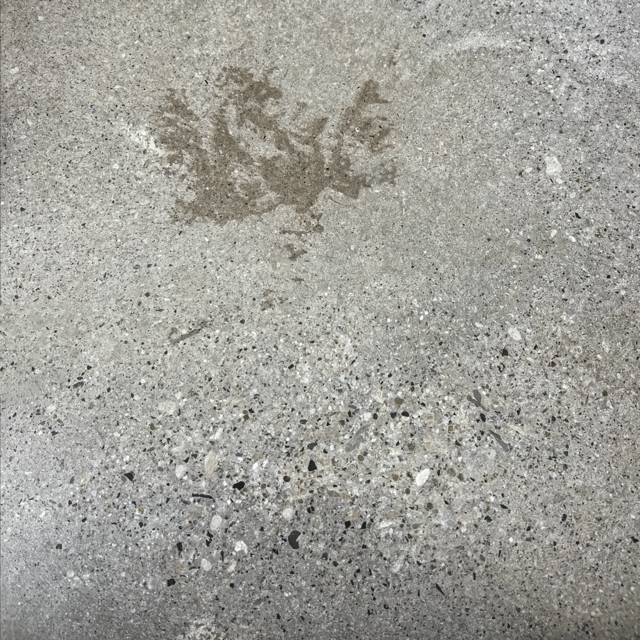Best DIY Methods and Professional Cleaners for Concrete Oil Stains
We’ve all experienced it—a delivery truck leaves a large oil stain on your concrete driveway, or your car drips oil on the garage floor. Oil stains on concrete can be stubborn, but they’re manageable with the right methods. In this article, we’ll first explore effective DIY techniques using household items to remove oil stains from driveways, garage slabs, and other common concrete surfaces. Then, we’ll rank our favorite professional-grade cleaners that we trust on our own job sites, helping you choose the best solution to restore your concrete’s appearance.
REMOVING FRESH OIL STAINS FROM CONCRETE
Overview
The most important thing to remember when dealing with oil stains on concrete is that fresh stains are always easier to clean than those left to sit. Because concrete is porous, oil can seep into its surface over time, making removal more challenging. For fresh stains, the first step is to remove excess oil from the surface. On smooth finishes like polished concrete, a rag with diluted dish soap works well, while on rough or broom-finished concrete, materials like sweeping compounds, sawdust, or kitty litter can absorb the contamination. Once the excess oil is removed, scrubbing the area with diluted dish detergent and a stiff nylon brush often resolves the stain completely, especially if addressed promptly.
When it comes to removing oil stains from concrete, a variety of DIY remedies are often touted as effective. A quick online search will reveal people using everything from powdered laundry detergent to gasoline and even soda. However, while many of these methods may lift oil stains, they can also damage or degrade the underlying concrete. This is particularly concerning for decorative concrete surfaces, where only certain solutions are appropriate. Below, we explore common DIY methods and their pros and cons to help you choose the best approach for your concrete.

Baking Soda
Baking soda is a popular choice for oil stain removal due to its absorbent nature. When mixed with other ingredients, it can be applied to an oil stain and left to dry, effectively lifting the contamination. This method is inexpensive and relatively simple.
However, baking soda’s alkaline pH may interact with concrete and lead to unexpected results. While it’s only a weak base, concrete is highly reactive to unbalanced pH levels. For this reason, we recommend using baking soda only on non-decorative surfaces like driveways, sidewalks, or unfinished garage floors.
Making a Baking Soda Poultice
Combine baking soda with either water or acetone, mixing until it reaches the consistency of a spreadable paste.
Spread the baking soda paste directly onto the oil stain, ensuring a uniform layer about 1/4 inch deep.
Allow the poultice to dry completely. This process may take several hours or overnight, depending on the humidity and temperature.
Once dried, inspect the area. If the method was effective, you should see the oil absorbed into the baking soda, indicated by discoloration in the dried paste.
Remove the dried paste with a broom and/or pressure washer.
For more details, visit our guide on How to Remove Oil From Concrete with Baking Soda.
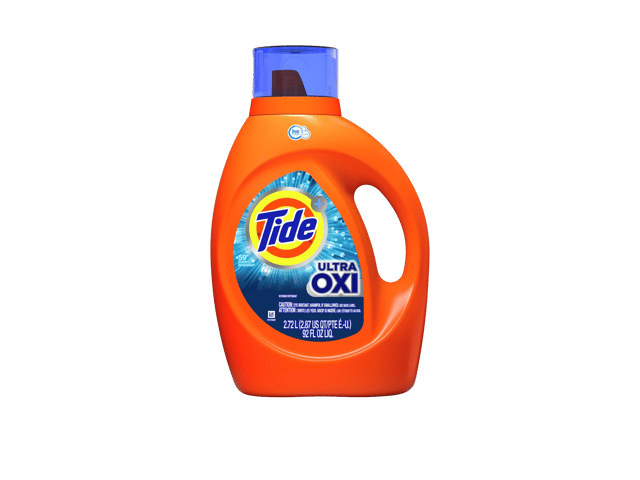
Gasoline
While gasoline might appear to clean oil stains effectively, it poses significant downsides. Its flammable nature makes it dangerous to use, and it leaves behind a persistent odor that can linger in the concrete for weeks or even months. Given these risks, we strongly discourage using gasoline as an oil stain remover.
Laundry Detergent
Laundry detergent can work for superficial oil stains but often falls short for deeper contamination. Removing stains with laundry detergent requires considerable effort, and stains frequently reappear after a few days. Additionally, laundry detergent can etch concrete, leaving behind a worn surface. While tempting due to its availability, laundry detergent is less effective than dish soap or a simple degreaser, particularly for decorative concrete.
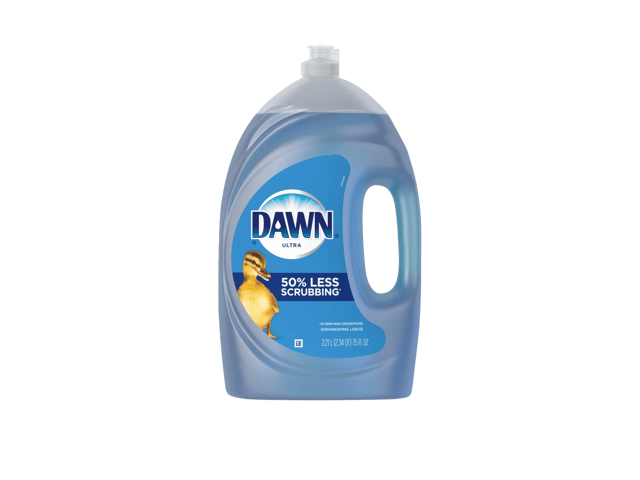
Soda
Soda’s cleaning power comes from its phosphoric acid content, which helps dissolve contaminants and remove stains. However, its acidic nature also etches the surface of the concrete, making it unsuitable for decorative floors. While soda can make exterior concrete look cleaner, it’s not recommended for interior surfaces.
Dish Soap
Dish soap is one of the simplest and most effective at-home solutions for removing oil stains. As a surfactant, it works by bonding to oil and washing it from the surface. Diluting dish soap is key—just a few drops in a gallon of water are usually sufficient.
Though not as powerful for deeply set stains, dish soap is gentle on concrete, making it ideal for decorative surfaces. It’s our go-to solution for fresh oil stains on polished concrete floors and other treated surfaces.
Want to Learn More About Polished Concrete Floors?
We’re here to guide you through the design of our products. A Concrete Floor Specialist will reach out within one business day.
OUR FAVORITE OIL STAIN REMOVERs
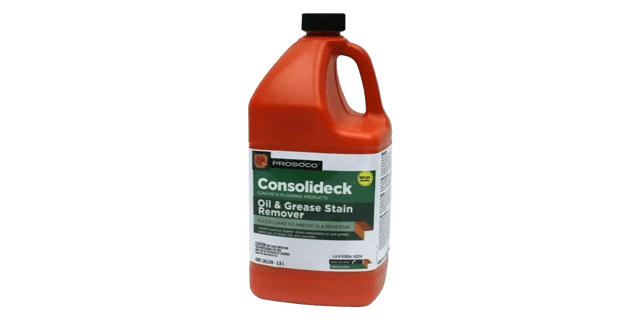
#1 Best Oil Stain Remover
Prosoco Consolideck Oil & Grease Stain Remover
For most oil stain removal, we use Prosoco Oil and Grease Remover. It’s a poultice explicitly designed for decorative surfaces, and from our experience has minimal impact on the areas around the stain. Further, it will remove stains set deep into a concrete slab, reducing the chance they reappear.
Prosoco Consolideck Oil & Grease Stain Remover is easy to use. It’s as simple as brushing the product over the stain, waiting for it to dry, and then brooming the dry product from the surface. Old or especially severe stains may take more than one application, but this product will remove even stubborn oil stains.
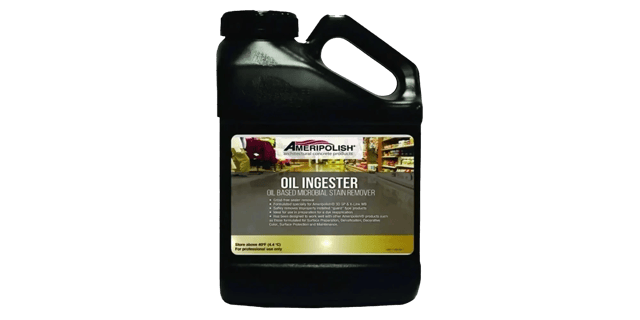
#1 Best Oil Stain Remover for Polished Concrete
Ameripolish Oil Ingester
The Ameripolish Microbial Oil-Ingester is designed for polished concrete floors and won’t damage or discolor the concrete. Further, it’s safe for pigment-treated floors concrete floors.
However, as this product works by microbial action, the stain can take weeks to ingest fully. This product requires that water be sprayed on the stain daily during removal. For best results, you should cover the stain with plastic to keep the affected area moist.
In other words, the application of this product is a total headache! However, there is an excellent reason to use this product.
Unlike the abovementioned Prosoco oil remover (or many of the home remedies), this microbial oil remover will not impact the surrounding concrete. That makes it the perfect product for removing stains from decorative floors such as polished concrete, concrete overlays, or cement-based terrazzo. For these floors, you should never try cleaning solutions such as laundry detergent or baking soda, as the likelihood that they will damage the floor is too high.
Visit our Ameripolish Oil Ingester Product page
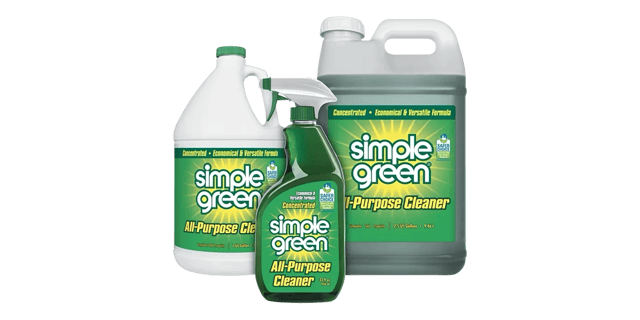
Honorable Mention: SIMPLE GREEN AND OTHER DEGREASERS
The most common oil remover is the degreaser, Simple Green. While Simple Green is most effective at removing fresh oil stains from concrete, it’s gentle on outdoor concrete, and you can easily apply it to large areas. Further, it’s inexpensive, and you can buy it at any hardware or auto parts store. You should use care when applying Simple Green to decorative concrete finishes.
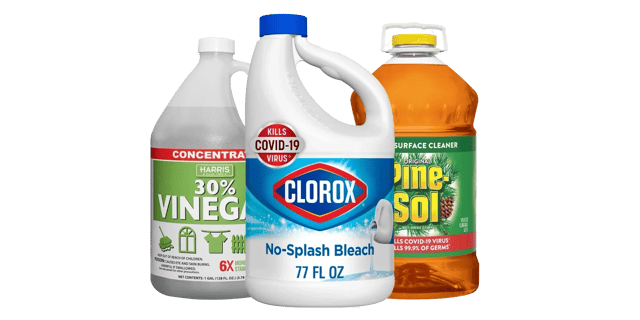
What Not to Use
Never use cleaners such as Pine-Sol, ammonia, vinegar, or bleach as they will dull, discolor or etch concrete
The frequent use of harsh cleaners will greatly reduce the life of your concrete. Strong chemicals can break down the concrete’s surface, leading to etching and increased vulnerability to stains.
Our Clients




















Blog

34,000 Sq. Ft. ESD Epoxy Installation in Dallas, Texas
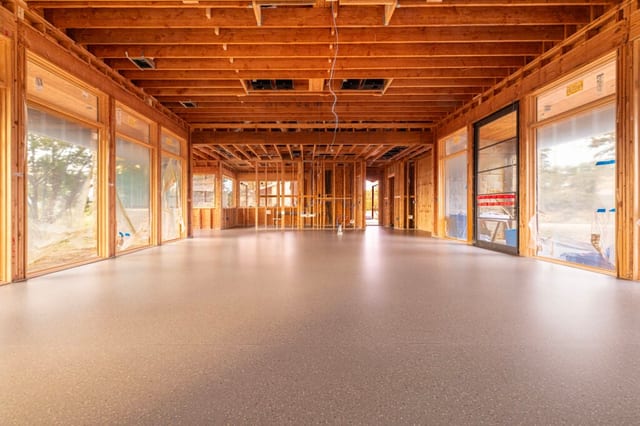
Residential Terrazzo Floors in Fort Worth, Texas


